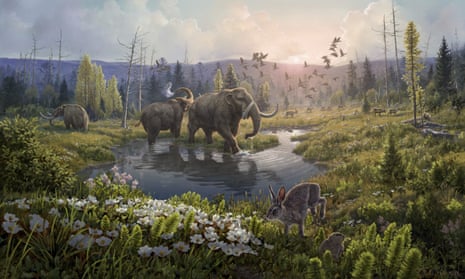DNA from 2m years ago reveals lost Arctic world
Breakthrough pushes back DNA record by 1m years to time when region was 11–19C warmer than today

Two-million-year-old DNA from northern Greenland has revealed that the region was once home to mastodons, lemmings and geese, offering unprecedented insights into how climate change can shape ecosystems.
The breakthrough in ancient DNA analysis pushes back the DNA record by 1m years to a time when the Arctic region was 11-19C warmer than the present day. The analysis reveals that the northern peninsula of Greenland, now a polar desert, once featured boreal forests of poplar and birch trees teeming with wildlife. The work offers clues to how species might adapt, or be genetically engineered, to survive the threat of rapid global heating.
Prof Eske Willerslev of the University of Cambridge and the University of Copenhagen, said: “A new chapter spanning 1m extra years of history has finally been opened and for the first time we can look directly at the DNA of a past ecosystem that far back in time.”
The fragments are 1m years older than the previous record for DNA sampled from a Siberian mammoth bone. “DNA can degrade quickly but we’ve shown that under the right circumstances, we can now go back further in time than anyone could have dared imagine,” said Willerslev.
